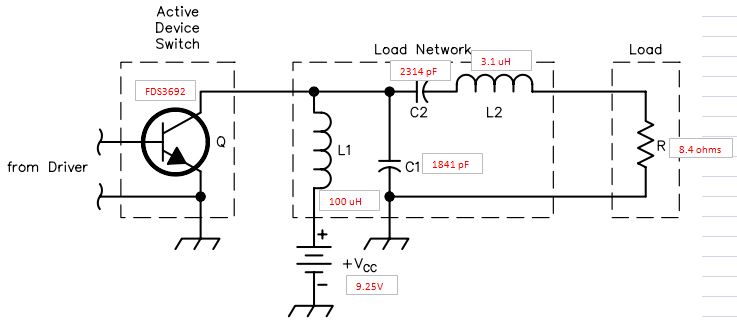I'm having issues getting a Class E Amplifier to work properly. I designed the amplifier based off of Nathan Sokal's paper titled "Class-E RF power amplifier"
https://people.physics.anu.edu.au/~dxt103/calculators/class-e.php
I designed for a 5 Watt amplifier at 9.25 volts:
My input signal is a 2.176 MHZ signal with a peak-to-peak amplitude of 2.2V and an offset of 1.5 Volts
When I run the SPICE simulation with that continuous sine wave signal, there are no issues and the amplifier appears to be working properly (blue is input signal, green is output signal from the amplifier).
The issue starts when I try changing the input signal from a continuous signal to a burst signal. The burst signal I am trying to amplify is the same 2.176 MHZ, 2.2V peak-to-peak amplitude and 1.5V offset. It is continuous for a certain amount of time, off for 7 us, then continuous again and this repeats.
Same input signal, just zoomed out

The problem is that the output amplified signal seems to over shoot and gradually fall back down to its proper voltage.
I don't know why it is overshooting. It works perfectly fine when the input signal is continuous. I also built a physical model of this amplifier and got similar results.
One last interesting thing I noticed is the current at L1 seems to be taking too long to reach its steady state value (L1 current in red below). From the looks of it, if it reached its steady state much quicker, the amplified signal wouldn't overshoot.
Anyway I'm out of ideas so I thought I would reach out here. It seems to me like this is probably a common issue with trying to amplify burst signals and hopefully there is a common solution. Thanks everyone!










